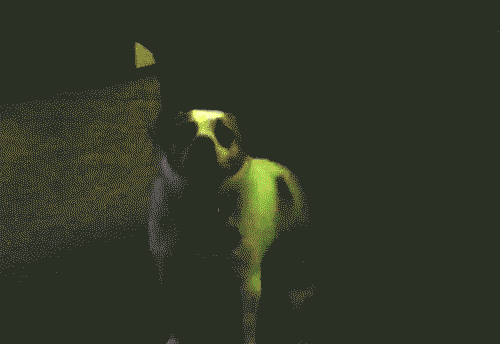Text
Childhood Scenarios of Enneatypes: Law of Three
by Personality Types (x)
I’ve recently come across a really interesting article that promotes a different hypothesis of how Enneagram types form during childhood and I thought I should present it briefly on the blog. It’s commonly accepted that the Enneagram type has both a genetic component and an environmental component and it’s their interaction that decides the final typology. This theory states that there are three major innate orientations of the personality and that we are all born with one of them prevalent over the other two. Furthermore, it suggests that each of the nine Enneagram types is a consequence of the way in which the child’s preferred inborn orientation (the hereditary component) interacts with the one that their parent - or main caretaker - has towards them in the forming years (the environmental component). Three Basic Orientations The three orientations are an expression of the Law of Three, on which the entire Enneagram concept is based. This law states that there are three kinds of forces that act in the human nature - the Active force, the Responsive force and the Neutral force and that each person is born with a natural preference for one of them. These three forces are similar to the Hornevian Groups (Assertive, Compliant and Withdrawn respectively), but they are used here in a different context, to describe inborn traits and parental styles rather than established personality. Here are the associated traits for each basic orientation: Active: demanding, assertive, bossy, outspoken, intimidating, egocentric, expressive, willful. Responsive: supportive, responsive, engaging, affectionate, friendly, sympathetic, cooperative. Neutral: avoidant, withdrawn, indifferent, apathetic, absent, reserved, ignoring, neglectful. Apparently, each child comes into the world with one of these predefined attitudes toward their environment and each parent will address their children with a certain parenting style, which can be, but isn’t necessarily determined by their Enneagram type. Any Enneagram type can use any of the three orientations to attend to their children. For example - an Enneatype 5 can be a Responsive parent, an Enneatype 8 might use a Neutral approach with their offspring, while an Enneatype 1 may lean towards an Active style. What determines the environmental component of a child’s future type is not necessarily the main caretaker’s type, but rather their particular approach to relating to the child. Nine Interaction Scenarios: Child vs. Parent Here are the 9 childhood scenarios that correspond to each of the 9 Enneagram types. Active child vs. Active parent This scenario is thought to produce Enneagram type 8. The child and parent experience open conflicts on a regular basis. They both have different agendas and oppose each other, thus giving rise to power struggles and explosive arguments. The Active parent is impatient and intolerant of the child’s rebellious nature and tries to impose his will in an authoritarian fashion. The Active child, on the other hand, becomes aggressive, argumentative and persistent in getting his own way. The relationship becomes a sort of battlefield, which is how the child will later perceive the world around him (type 8). Such a childhood scenario encourages the child to develop a keen eye for spotting other people’s weaknesses and a thirst for imposing their will in an overly aggressive fashion. They learn to be assertive, strong and deny their fears and feelings of intimidation. These are the traits they needed to have in order to stand up to their domineering parents and still keep their own Active inborn approach. Active child vs. Responsive parent This scenario is thought to produce Enneagram type 7 The demands and concerns of the Active child are usually received with benevolence and a supportive, encouraging attitude. This creates a tolerant environment in which the child can express himself openly and receive attention without much effort from his part. The Active child becomes self-confident, carefree and expects his interactions to be positive and favorable to his needs. The Responsive parent is sympathetic and loving, thus stimulating the child’s playful, self-expressive side and giving him a good deal of personal freedom. This childhood scenario promotes a cheerful, optimistic type who knows how to charm and manipulate others into easily getting his way. Entertaining and expressive, such a child may later expect instant gratification for all his needs and desires and avoid investing time and effort into long-term goals. Active child vs. Neutral parent This scenario is thought to produce Enneagram type 4 In this relationship, the child usually tries to grab the attention of an indifferent or absent parent, by expressing himself with increasing intensity, until a response is achieved. The Active child may act in a dramatic, exaggerated manner, attempting to get his message across to the unconcerned caretaker. The Neutral caretaker will typically ignore the child’s emotional needs, making the youngster feel frustrated, misunderstood and possibly abandoned. Sometimes the child turns these negative feelings inwardly, believing that they are unlovable and not special enough to deserve attention. This scenario teaches the Active children that they are different than other children that seem to be getting the support they lack. They want to make themselves heard so they amplify their feelings, resorting to dramatic expressions of their emotions. These children may later become overly sensitive, artistic and theatrical, but also melancholic, self-loathing and depressive. Responsive child vs. Active parent This scenario is thought to produce Enneagram type 1 This interaction is generally centered around the parent’s agenda, to which the child will subscribe in order to receive the desired approval. The Active parent will be demanding, dominating and will criticize any perceived “bad” behavior. The Responsive child, on the other hand, is unusually sensitive to criticism so he will try to adjust and adhere to the parent’s values and perspectives, by being obedient, well-behaved and an altogether “good kid”. This attitude will help him build the desired rapport with the fastidious main caretaker. With time, the child will learn to put aside his real needs and wishes in order to do the right thing, to be correct and morally ethical. These types will prefer to have a clear set of standards and rules to adhere to and will only feel worthy and lovable when they live a righteous life, in accordance with their upstanding principles. Their parents taught them that acceptance comes only through obedience and discipline. Responsive child vs. Responsive parent This scenario is thought to produce Enneagram type 6 This child will usually establish a very close relationship with his caretaker and will tend to become dependent on the nurturing, affectionate figure that offers him support and understanding. A strong desire for harmonious relationships is created and the Responsive child will reject and feel threatened by conflicts and lack of stability. Such types will seek playmates and groups that share their values and interests and will take an ‘us against the world’ stance, typically towards unfamiliar people and circumstances. These Responsive children will prefer to play by the rules in order to keep themselves safe from any disharmony that will endanger their comforting, supportive relationships. They will be playful, endearing and loyal to their chosen groups and intimates, while at the same time remaining alert and vigilant to avoid any conflicts and hidden threats. Suspicion of other people’s motives can arise as a protection from abandonment and rejection - they are in fact very afraid of losing their safe, nurturing grounds. Responsive child vs. Neutral parent This scenario is thought to produce Enneagram type 2 In this case, the Responsive child will act in a pleasing, appealing matter but will most likely encounter an indifferent attitude on the part of the Neutral parent. Confronted with this apathy and lack of interest, the child can only resort to becoming even more pleasing and irresistible to the parent, until he manages to break through the shell of indifference and obtain the desired rapport. Such types will be helpful, empathetic, lovable and attractive and will have a knack for getting on the same wavelength with their parents - they know when and how to approach them in order to obtain their attention. Growing up, the Responsive children will learn to intuitively sense and assess other people’s moods and will know exactly how to fulfill their needs in order to be appreciated and loved by them. They have a wide repertoire of seductive behaviors and know exactly which approach to use in order to successfully engage others into a close relationship. Neutral child vs. Active parent This scenario is thought to produce Enneagram type 9 The Neutral child is often overwhelmed and frightened by the controlling, domineering Active parent. Lacking self-assertion skills, he prefers to withdraw and stay out of the way, minimizing his own needs and avoiding the parent as much as possible. On the few occasions the child reaches out to the caretaker, he ends up feeling rejected and bullied around for no apparent reason, which causes him to withdraw again. The loneliness, however, also feels like rejection and soon enough the youngster will be ambivalent towards both being alone and being with others. Most of the time, a compromise will be made. This type will seek out company but will not invest themselves in it, preferring to keep in the background and go with the flow, partly removed from their actual situation. When alone, they will avoid introspection, which will bring about old feelings of depression and rejection, instead they’d rather numb themselves out with food, TV or other unimportant routines to avoid emotional pain. Neutral child vs. Responsive parent This scenario is thought to produce Enneagram type 5 In this relationship, the Responsive parent is inclined to give a lot of unrequested attention to the Neutral child, who perceives his parent’s supportive and affectionate attitude as a form of smothering. The youngster will tend to withdraw from his environment, preferring solitary activities and contemplation, but as opposed to the previous scenario (of type 9), loneliness will not be accompanied by a feeling of rejection. At the contrary, being alone is a matter of choice and it gives a feeling of security and well-being, knowing that there is always someone to communicate with when they decide to seek out company. Such children are genuine loners, who prefer and enjoy their solitude. They are introspective, insightful and love learning and discovering things on their own, usually rejecting any help or intervention from the outside. They are afraid of being intruded upon because their parents used to make a fuss over them and suffocate them with attention and demands for closeness. Neutral child vs. Neutral parent This scenario is thought to produce Enneagram type 3 This Neutral child’s solitude is encouraged by his parent’s own withdrawal and indifference, which doesn’t necessarily make the Neutral child feel openly rejected, but rather intrigues and challenges him. Serious, focused and rather unemotional, this youngster will most likely try to fulfill his occasional need for attention by impressing his parents with outstanding accomplishments and high aspirations, which make him feel worthy and valuable in their eyes. Later in life, these children become motivated achievers who put great emphasis on results, performance, efficiency and a successful image that will make others appreciate and admire them. Deep inside they dislike being ignored because it makes them doubt their own value, therefore they tend to hide their weaknesses and flaws and project a desirable, attractive, “I-have-it-all” persona.
478 notes
·
View notes
Text
Types of INTPs
the lazy good for nothing
the lazy genius
the crazy little shit who burnt down your kitchen
the mad scientist
the lazy professor
the absentminded professor
the professor who grades your paper with so much red ink it looks like it’s bleeding and writes one blue “good job :)” in the corner
the one you don’t hear from for two months
the scientific poet (?)
the crappy friend
the friend who forgets you exist except to text you random crap at 2 A.M.
the one who tries to be an INTJ and fails
these are actually all the same person
INTP
3K notes
·
View notes
Text
The Types and Protest Signs
ESFP:

ISFP:

ESFJ:

ISFJ:

ESTP:

ISTP:
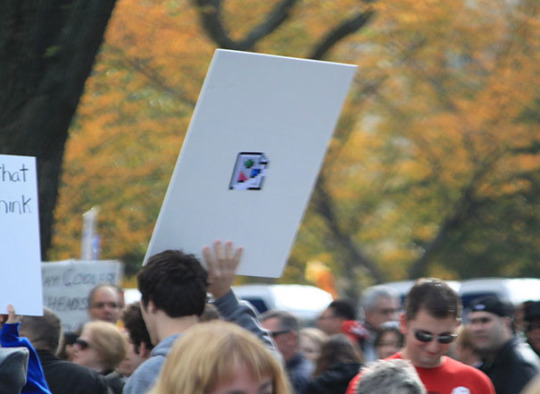
ESTJ:

ISTJ:

ENFP:
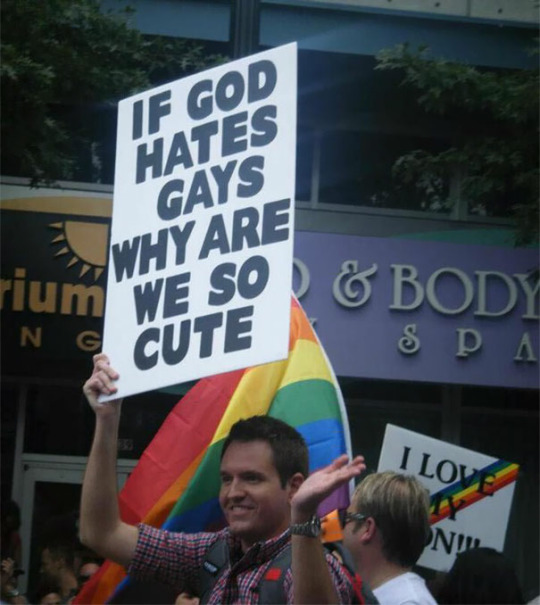
INFP:

ENFJ:

INFJ:

ENTP:
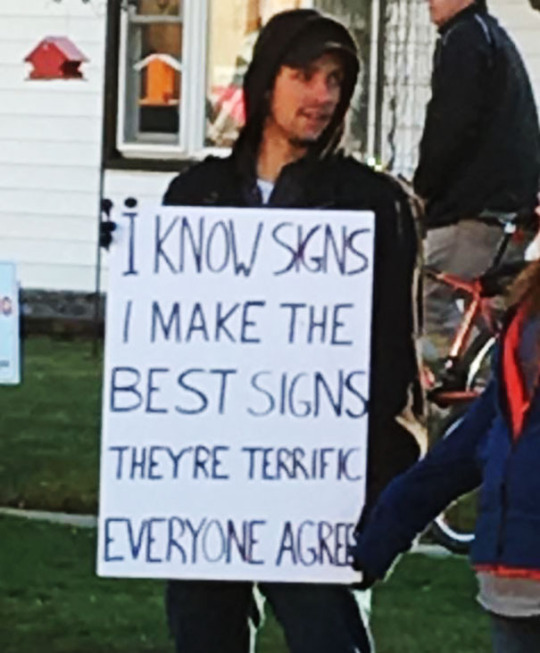
INTP:

ENTJ:

INTJ:

9K notes
·
View notes
Text
INTP the Chameleon
Unlike most people, INTPs do not come pre-programmed with acceptable social behaviour patterns. Rather, they learn to fit in through conscious observation and deliberate mimicry.
While other people talk, the INTP watches and wonders. They observe what a person did and figure out what they should do as a response. Widening their sight, nodding, and smiling, the INTP responded with a fake social skill.
Like actors on a stage set, INTPs are playing a role. They know that being true to themselves doesn’t fit too well with average people, they slowly accumulate a little acting knowledge to help them get by.
INTPs could be described as a human chameleon or a mirror. If a person is friendly, funny, boisterous, and waves their hands around a lot, the INTP will start gesticulating, speak in a louder voice, and smile and joke more to match the other’s behaviour. And when the person is finally gone, they will turn into their typical self which often is silent, aloof and nonchalant, and slowly cocoon themselves inside their room.
Most of the time this mimicry is unconscious and is basically the result of playing a role deeply enough that it becomes embedded. Chameleons don’t have to think about changing their skin colour to match leaves and branches–it just happens.
Not that INTPs are good actors. They only act because they have to, and only put forth as much effort as is required to get by. An INTP, for example, does not have a giant palette of varied emotional responses that seem totally genuine. Instead, they are controlling their bodies like a puppet-master controls a puppet, and the resulting clumsy imitation of reality is just not lifelike. But it’s enough to get by, as long as there isn’t too much pressure.
If the pressure increases or the situation warrants it, however, an INTP will switch back to their regular selves for as long as necessary, perhaps stunning their acquaintances with a display of cool, clear, cogitant reasoning.
(The secret life of INTP- Anna Kendrick)
10K notes
·
View notes
Text
MBTI types as Spongebob GIFS (intuitives version)
ENTJ
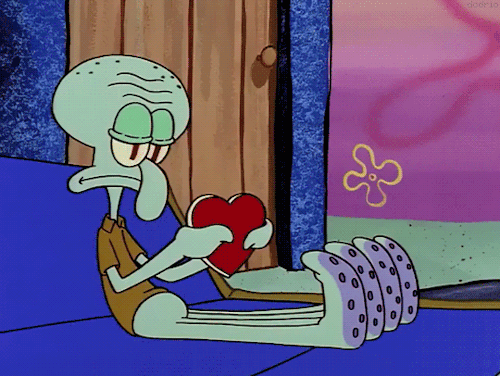
INTJ

ENTP

INTP
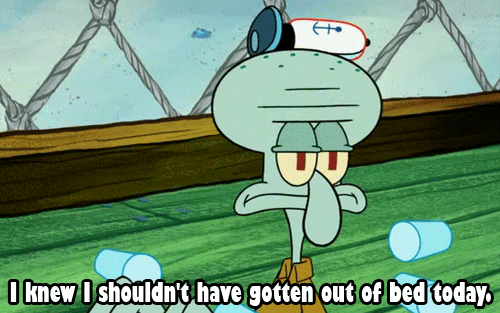
ENFJ
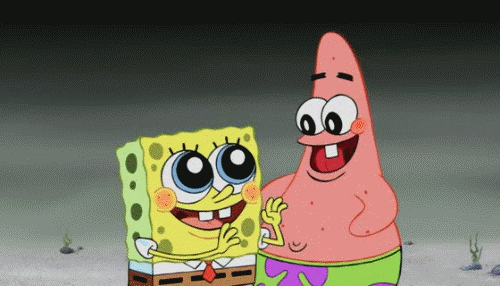
INFJ

ENFP
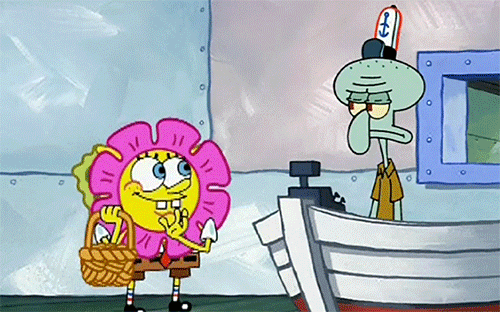
INFP
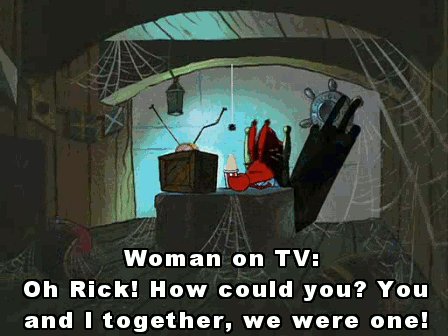
1K notes
·
View notes
Text
the MBTI types as multiple people i know
INTJ:
-has the emotional intensity of a potato
-just lost in general
-communism jokes
-Actual Satan ™ (and proud of it)
-really intelligent and talented in academic fields or art
-probably has sex with the concept of math
ENFP:
-energy for days
-absolutely no chill
-if they call you they will talk for 12 hours straight (you cannot escape)
-falls in love with literally anything
-a fool
-atleast a bit gay
ENFJ:
-also zero chill
-secretly a nerd
-an active tinder user
-can go from 0 to 100 real fast
-perfect instagram feed
-probably bi
INFP:
-The Purest Person ™ on this planet
-just trying their best
-great aesthetic
-protect them at all cost
-smart but wont admit it
INFJ:
-enough feelings to share to five INTJs
-seriously, no one needs to feel that much, okay?
-also has zero chill but hides it and explodes on the inside
-laughs at funny birds
-people might think that they have their shit together but in reality they have no idea what they’re doing
INTP:
-nerd
-fueled by memes
-is actually watching youtube videos when claims to be studying
ISTP:
-nerd, but likes to snowboard
-fueled by bad tumblr memes
-never studies
ENTJ:
-thinks they’re always right
-gets offended when someone tries to ask about their feelings
-very independent
-a fridge full of alcohol
-questionable morals
ESFP:
-just wants everyone to have a great time
-creates drama for themself just for the fun of it
-a mess but still somehow manages to survive in life
-cares alot about their friends
8K notes
·
View notes
Text
IXTP and Emotions
Okie dokie, more INTP curiosity coming your way.
So I know that we INTPs have a stereotype going around that we’re basically robots with a chip programmed for empathy. And I also hear around that INTPs are supposedly against feelings or expressing them. But even though I agree with the empathy-programmed robot (lol, yeah right), I can’t agree that we hate emotions.
So I wanted to ask other INTPs and ISTPs how they truly feel about emotions. I mean, you can say what you think about them, but if you’re cool with saying how you exactly process them and how they feel, that would be great.
Also you can mention how it feels to have low Fe in your society because the way we process emotions is considered wrong somehow. So let it rip: anything you can think about surrounding emotions is welcome.
It would be nice to see how wrong or right the IXTP stereotypes might be.
287 notes
·
View notes
Conversation
like, a god of death or whatever, standing on my lawn: you're about to experience the wrath of a god
me, who was watering my plants and turned at the sound of a voice, thereby accidentally spraying them w/ the hose: oh, wow, i'm so sorry dude, shit
88K notes
·
View notes
Photo
Im jianyason and jeanette

this has probably been done anyway tag urself i’m tahini sauce and jeanette
12K notes
·
View notes
Text
do you ever get stuck in between “it’s ok not to have everything on track i got time” and “i’ve already wasted my life at the ripe old age of 23”
304K notes
·
View notes
Conversation
my entire academic career
me: I should have done this earlier
me: [sweats nervously]
886K notes
·
View notes
